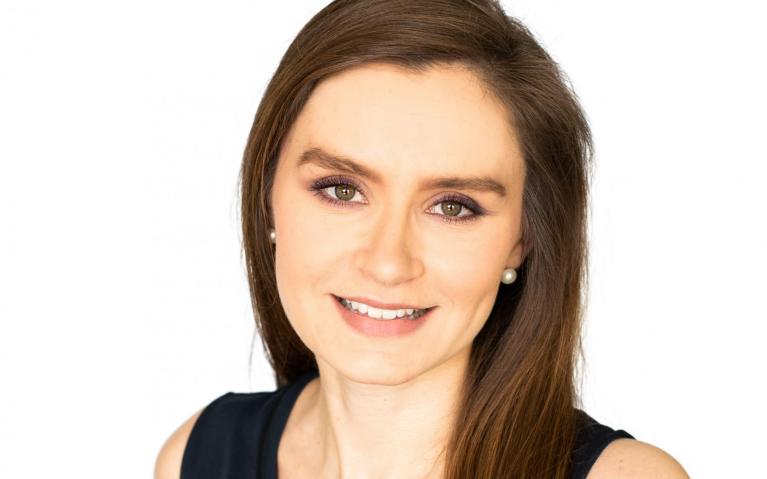
Veronica Letawsky
Doctor of Philosophy in Audiology and Speech Sciences (PhD)
Research Topic
Exploring salivary changes and effects on swallow physiology and perception in chronic autoimmune disease.
Theses completed in 2010 or later are listed below. Please note that there is a 6-12 month delay to add the latest theses.
Swallowing efficiency deteriorates with age, but much is unknown regarding the age-related changes. Tongue and lip strength are potential surrogate markers of swallowing efficiency given their correlation with impaired swallowing (dysphagia). Tongue and lip strength have also been associated with grip strength, a common index of overall muscular functioning. To date, oral strength relative to grip strength is not well understood and the tongue is often studied in isolation. Furthermore, sex differences in swallowing remain under-investigated. Using an observational design, 18 healthy adults were stratified into 3 age groups: youngest (65; n3 = 5). Participant age ranged from 18 to 80 years. Median (IQR) age was 55.2 (43.4) years. Each group included 1 male, age-matched within approximately one year to a female. Participants were assessed for maximum anterior and posterior tongue strength (kPa) and endurance (s), left and right lip strength (kPa), and grip and pinch strength (N). The sequence of oral measurement positions was randomized. Data was summarized using medians (IQR), and analyzed with nonparametric tests. Across the female sample, anterior tongue strength and endurance were stronger than posterior (strength, p = .009; endurance, p <.001 we="" are="" the="" first="" to="" find="" age-specific="" strength="" and="" endurance="" differences="" between="" tongue="" positions="" p=".009;" .001="" uniquely="" found="" lip="" decline="" with="" age="" positive="" association="" oral="" pinch="" posterior="" right="" left="" consistent="" previous="" research="" hand="" decreased="" particularly="" in="" oldest="" group="" grip="" positively="" correlated="" suggesting="" generalized="" age-related="" decline.="" finally="" males="" were="" stronger="" than="" females="" these="" findings="" contribute="" further="" understanding="" of="" structures="" investigations="" may="" inform="" low-cost="" dysphagia="" screening="" methods="" facilitate="" better="" patient="" care.="">
View record
Patients requiring artificial airways and prolonged mechanical ventilation while in critical care frequently suffer from various iatrogenic complications during and after hospitalization. One of these is dysphagia, or disordered swallowing, which can affect over 90% of this population. Patients unable to swallow safely are often at risk of other adverse sequelae, including serious pulmonary complications. Intervention may necessitate tube feeding and/or modified food and/or liquid; as a result, the treatments necessary to sustain life during critical illness may affect psychosocial well-being and quality of life. To date, no study has examined the perspectives of patients with dysphagia following critical illness and artificial airway use.Using a prospective study design, we recruited a convenience sample of patients who had swallowing impairment following artificial airway use from three healthcare facilities in a single health care region. Four patients were recruited to this study from January to April 2021. Using a semi-structured interview format, one interviewer explored their experiences. Following interview transcription, results were analyzed thematically by two reviewers. We identified several common themes reflecting participants’ beliefs and values around eating and drinking, in the context of: 1) connectedness with family, 2) recovery and overall health, and 3) personal autonomy and dignity. We further identified latent patient perceptions of swallowing and instrumental assessment – in particular that swallowing was a volitional action, and that assessments were a test of ability with a binary outcome.This study is the first to investigate the perspectives of a sample of this population. As communication specialists, S-LPs have a vital role to play in fostering effective multi-directional communication between all members of the care team, including the patient and their family.Understanding this role within the context of these patients’ perspectives will enable clinicians to deliver enhanced patient-centered care.
View record
Sjogren’s syndrome (SS) is an autoimmune disease characterized by altered saliva quantity and composition. Saliva is integral to swallowing, contributing to bolus formation, lubrication, and digestion. Salivary changes in SS can affect the perceptions and execution of deglutition resulting in increased residue and impaired bolus transport and formation. To date, no study has investigated the link between salivary biomarkers and swallowing perceptions. Our objectives were: 1) to explore the operational feasibility of investigating saliva quantity (volume) and quality (proteins/hormones) in those with and without SS, and 2) to explore the relation between saliva and swallowing perceptions across participants. We conducted a matched case-control, mixed methods study, collecting feasibility data and conducting quantitative and qualitative measures. We collected unstimulated and stimulated whole saliva conducting sialometric (flow rate) and sialochemical analyses including α-amylase, cortisol, mucins (MUC5B, MUC7), C-reactive protein (CRP), and total protein. We measured oral dryness (Clinical Oral Dryness Score [CODS]) and swallowing perception (SWAL-QOL Survey). We described the data using means (±SD) and medians (IQR), compared between groups using t-tests and Mann-Whitney U, as appropriate. We explored Pearson correlations comparing salivary data with oral dryness and swallowing perception. Over 13-weeks, we enrolled a convenience sample of 12 (N): cases (n1) = 6, controls (n₂) = 6 with five females, one male per group. Ages ranged from 31 to 68 years (n1, primary SS) and 31 to 64 years (n₂). All participants completed assessments and produced analyzable saliva. Those with SS presented with reduced flow rate (p = .003) and increased total protein, cortisol, and CRP (p
View record
If this is your researcher profile you can log in to the Faculty & Staff portal to update your details and provide recruitment preferences.